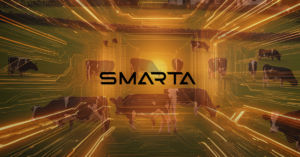Driving Efficiency and Innovation through UX/UI Design
In the modern industrial landscape, the user experience (UX) and user interface (UI) design of tools and systems are no longer optional—they are critical components for operational success. Industrial UX/UI design bridges the gap between complex technologies and the people who use them, ensuring that systems are not only functional but intuitive, efficient, and enjoyable to operate.
What is Industrial UX/UI Design?
Industrial UX/UI design focuses on creating user-centric interfaces for industrial tools, equipment, and software. It’s about designing systems that meet the unique demands of industrial environments, from manufacturing plants and logistics operations to agriculture and engineering. This approach prioritizes usability, safety, and productivity, empowering users to perform their tasks with minimal friction.

The Importance of
UX/UI Design
The Key Principles of
UX/UI Design
Simplicity
Interfaces should prioritize clarity and remove unnecessary complexity. Users should be able to access the information they need without confusion.
Accessibility
Designs must accommodate diverse user needs, including those working in high-stress or low-visibility environments. This includes large, readable fonts, clear icons, and logical layouts.
Responsiveness
Industrial interfaces must provide real-time feedback and updates, especially for time-sensitive tasks like monitoring equipment or logistics planning.
Adaptability
Systems should be customizable to fit the specific needs of different industries, operations, and user roles.
Durability
In industrial settings, interfaces must withstand harsh conditions, including extreme temperatures, vibrations, or moisture, while remaining functional and readable.
Applications of Industrial
UX/UI Design
Monitoring and Control Systems
Logistics and Supply Chain Platforms
On-Site Hardware Interfaces
Maintenance and Training Tools
Discover the latest industry insights

The Smarta Perspective: Predictive Technology and the Future of Business Operations
The future of business lies in prediction—forecasting trends, anticipating challenges, and making data-driven decisions. Predictive technology, powered by AI and machine learning, is transforming industries

The Smarta Perspective: Change Resistance vs. Benefits in Adopting New Technologies
Change is often met with resistance, especially when it involves adopting new technologies or altering established procedures. Yet, history shows us that those who embrace

The Smarta Perspective: The Role of Technology in Environmentally Beneficial Movements
In an era where environmental sustainability has become a global priority, technology plays a pivotal role in driving progress. From renewable energy systems to advanced

